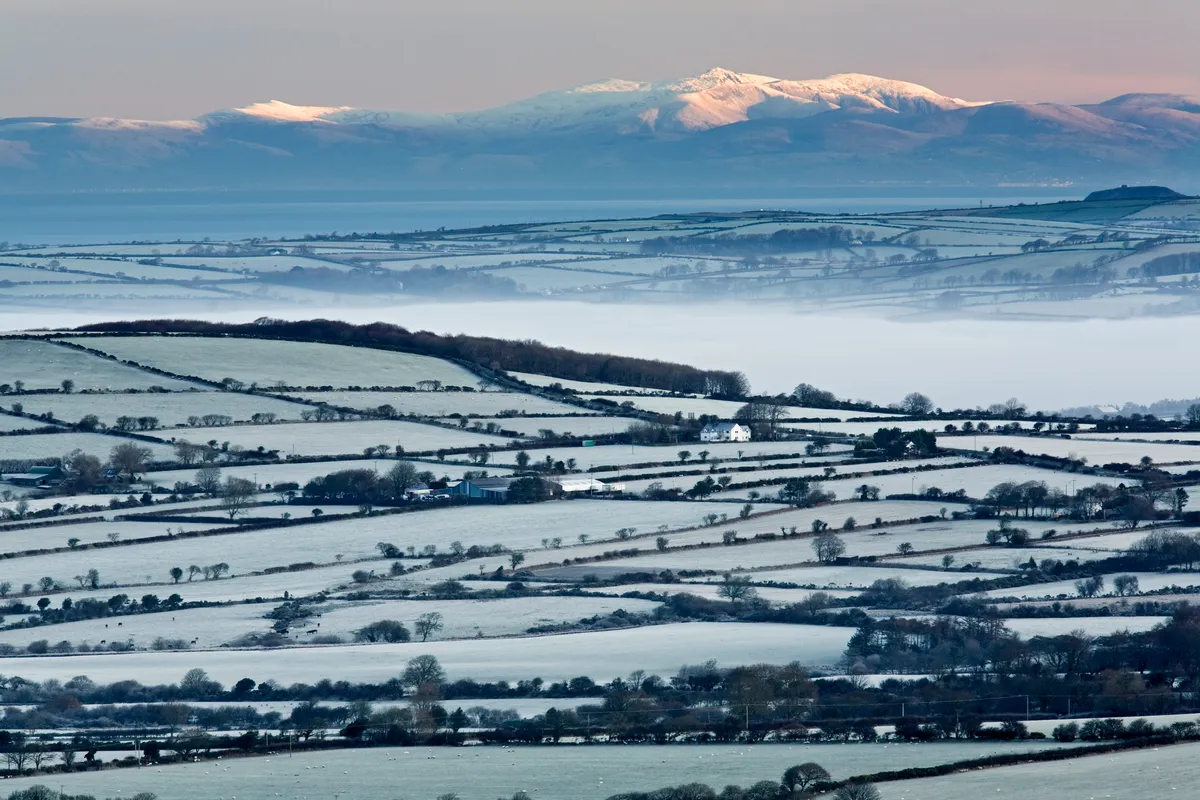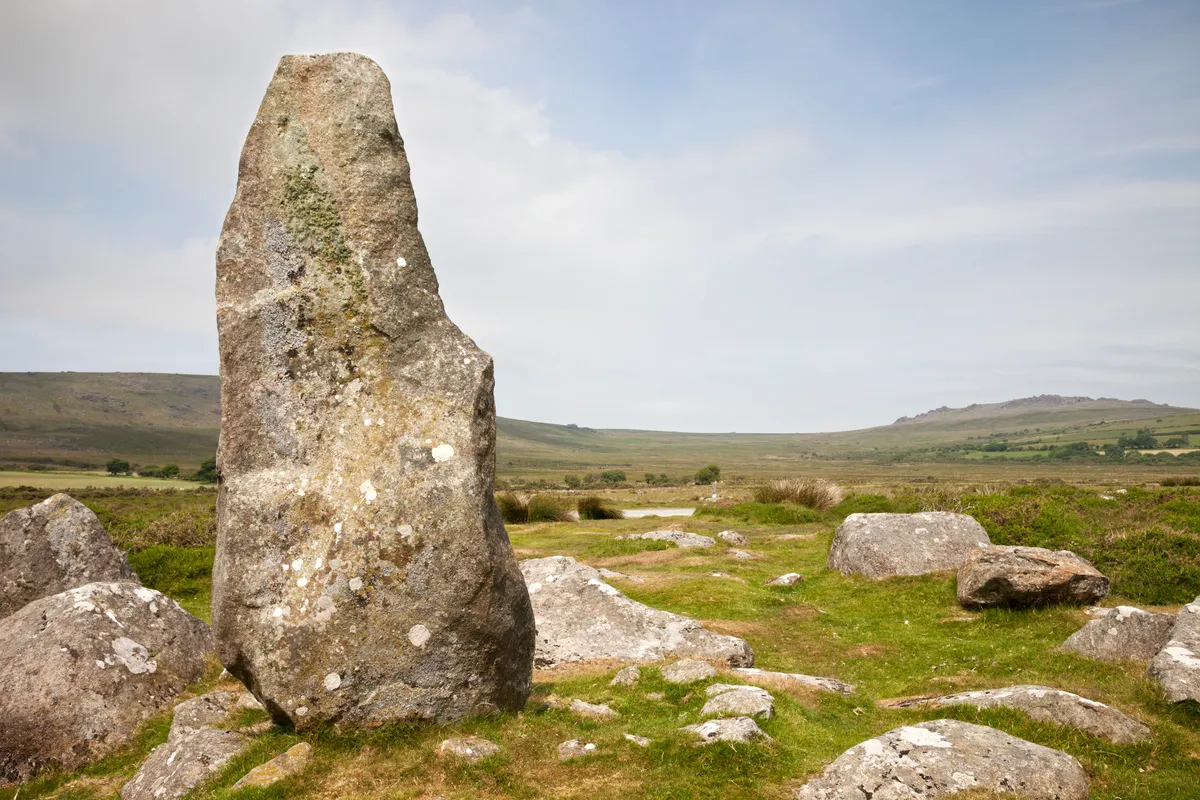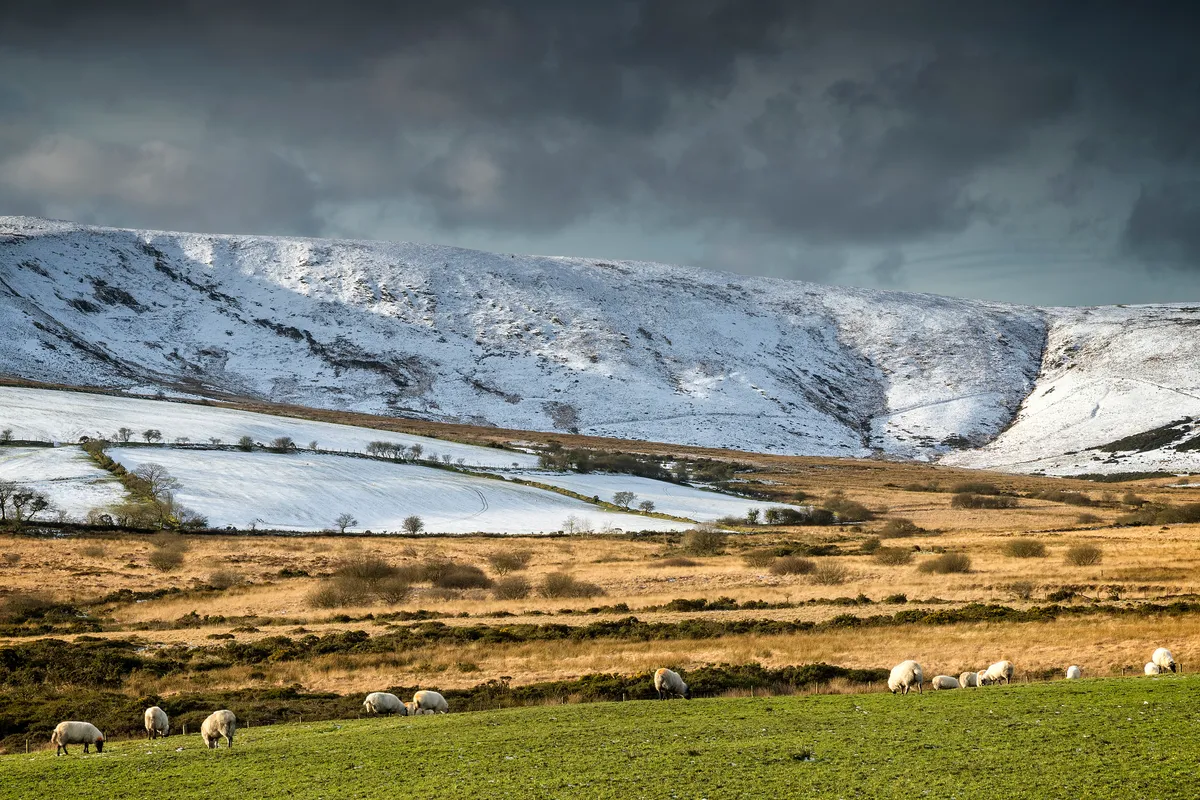January is a challenging time of year. The excitement of Christmas has come and gone, leaving empty wallets and bulging waistlines, says archaeologist and television producer and presenter Jules Hudson.
So what better way to up the mood than by combining some much needed exercise with a fascinating stroll through one of the country’s most captivating prehistoric landscapes: the Preseli Hills in the Pembrokeshire National Park?

As an archaeologist, I’ve long known that the Preselis have a rich and dramatic past, not least being the fabled source for the bluestones that make up the inner ring of Stonehenge.
For many years now, historians have debated how these great megaliths could have been transported halfway across the country from the Welsh coast to Wiltshire. But to my great shame, while I’ve driven through the Preseli Hills countless times, I’ve never ventured into them. I was about to right a great wrong, and how better than with local guide, storyteller and Nordic walking instructor, Andrew Dugmore.

Magic Mountains
Having grown up in the Ebbw Valley, Andrew gained a taste for walking in the hills where he was born. When the chance came to move to the peace and quiet of Pembrokeshire, it was only a matter of time before he fell in love with the Preseli Hills. Over the last 35 years, he’s made them his own, researching the stories behind a landscape rich in history and folklore.
As those of us lucky enough to live near mountains know, they have an immersive, spiritual draw. For Andrew, this is what it’s all about: “They have a magic all of their own. You have to respect them, and learn from them, and give yourself time to appreciate their silence. Coming up here is a great way to clear your mind and put life in perspective”.
Much has been made of Nordic walking, since it emerged from Finland as a handy way of getting the most from a yomp in the countryside. The technique originates in cross-country skiing in the 1930s, when off-season skiers realised that using poles gave them a massive advantage when training without snow – it helped keep their upper body, heart and lungs in top condition. Andrew quickly explained that the idea is not to lever yourself forward, instead, they encourage you to swing your arms as you walk, persuading those nasty calories to get up and go.

The whole experience is remarkably relaxing. I’m a keen walker for all sorts of reasons, but keeping fit is a handy by-product. And, according to Andrew, you can burn 45 percent more calories Nordic walking than during a regular wander.
Our seven-mile linear route would take us from Bwlch Gwynt and across the spine of the Golden Road to a lay-by at Llainbanal. In summer, you can use the Green Dragon Bus to drop you back at your car, but there are circular alternatives if you’re walking out of season.When I visited back in October, it was an early autumn day with a clear blue sky, warming sunshine and a crisp feel to the air.
The Golden Road, Andrew explained, is an ancient route, and the prehistoric landscape around it contains more than enough evidence to determine that 4,000 years ago, and later during the Bronze and subsequent Iron Age, the Preseli Hills were busy being developed, consecrated and revered. “I often like to imagine the many thousands of people who’ve trod this route over the years. Its development must have been overseen by a great chieftain,” Andrew said.
Preseli Hills walk
1. From Bwlch
The route, from Bwlch Gwynt leaves the road to the east along ‘The Golden Road’, climbing gradually through forest into the Preseli Hills.
2. Foel Feddau
Our first stop was a superb Bronze Age burial cairn at Foel Feddau, from which you can look north towards the coast and the site of Castell Henllys, an example of the UK’s best and most ambitious reconstructions of an Iron Age fort. One of the most defining features of this landscape is a never-ending series of rocky outcrops.

3. Knights on a hill
When we reached Cerrig Marchogion, Andrew recounted a tale from The Mabinogion, a collection of medieval Welsh manuscripts, about how Arthur’s knights were turned to stone here following a great battle. And why not – surely every mystic landscape needs an Arthurian tale, as well as an Arthurian burial site? Here it’s called Beddarthur, an oval ring of stones built thousands of years before Arthur was even dreamt of.
Our walk along the Golden Road was marked with huge pieces of quartz. The mineral is often found in prehistoric monuments, and even today, many Welsh dry stone wall builders I know maintain that every wall or building should contain some for good luck.
4. Ancient remains
As we continued east, with the setting sun on our backs, we saw the extraordinary remains of Carnalw Hillfort and the striking Cairn Cemetery of Foeldrygarn to the north. But as any good guide should do, Andrew saved the best until last. We were making for a huge outcrop at the end of our route, known locally as Carn Menyn, the legendary source for the bluestones at Stonehenge. This is a place I’ve always wanted to visit, and our timing was perfect.
The light was getting low, and there was a palpable sense that we were walking through a landscape of huge spiritual significance. Our conversation fell silent as we marvelled at our surroundings. If the geologists are right, it was here, some 4,000 years ago, that our ancestors gathered to cut and transport great megaliths to Stonehenge.
We climbed to the top of one of the many outcrops, strewn about the crest of this ridge like the bones of prehistoric animals. We watched the sun melt over the horizon into the Irish Sea and enjoyed a moment that’s not changed in thousands of years. Did my Nordic walking burn of 45 percent more calories? In the end it didn’t matter. I wouldn’t have missed this for the world.
5. Final thoughts
This is not the longest walk in the world, or the toughest, but imbued as it is with layers of prehistoric magic, it has the power to engulf and inspire. So go on, get your walking boots on and explore Pembrokeshire’s ‘Golden Road’. The landscape and your imagination will do the rest.
Preseli Hills walk
Preseli Hills walking route and map

Useful Information
FIND OUT MORE
Pembrokeshire Paths
01437 530025
pembrokeshirepaths.co.uk
Andrew offers guided walks, Nordic walking instruction, walking holidays and storytelling.
EAT
Tafarn Sinc
Rosebush, Maenclochog
SA66 7QU
01437 532214
www.tafarnsinc.co.uk
The Tafarn Sinc or Zinc Tavern is exactly that, built completely from ‘wrinkly tin’. Apparently the steak is fantastic.
